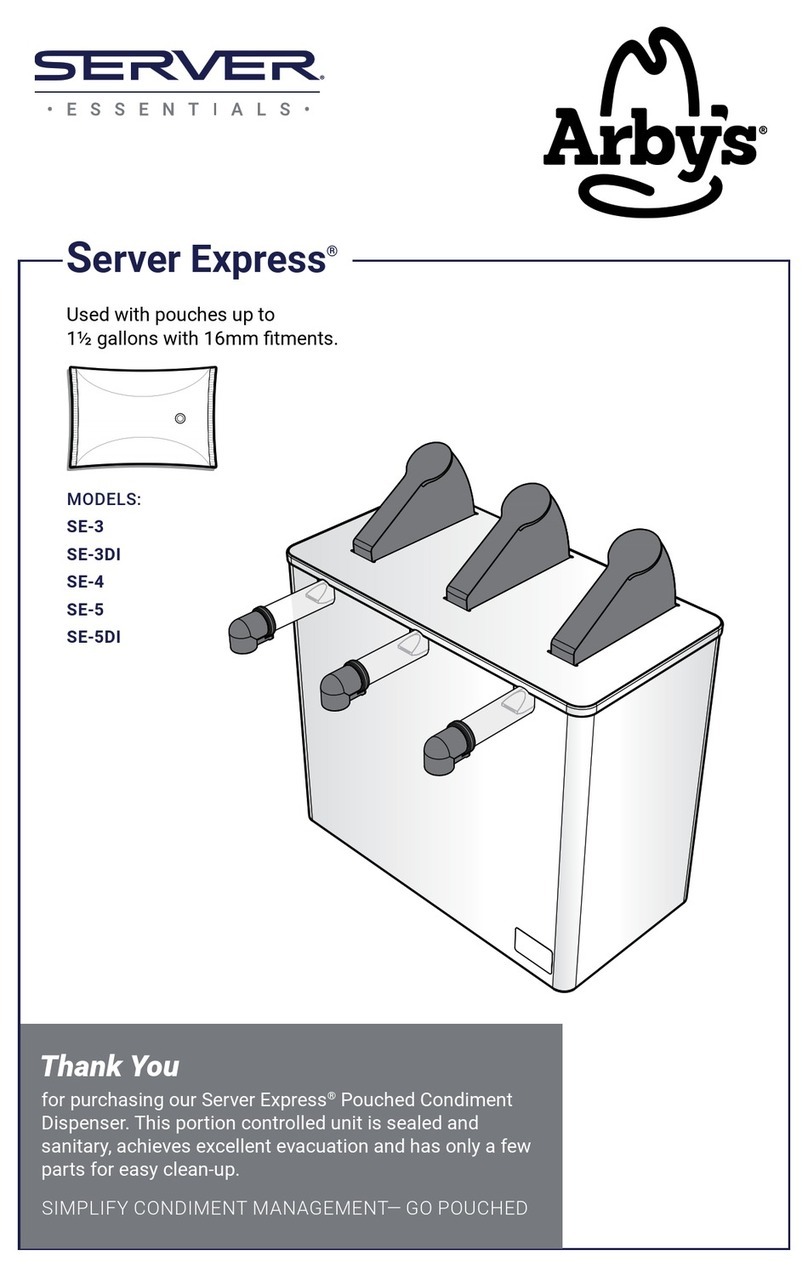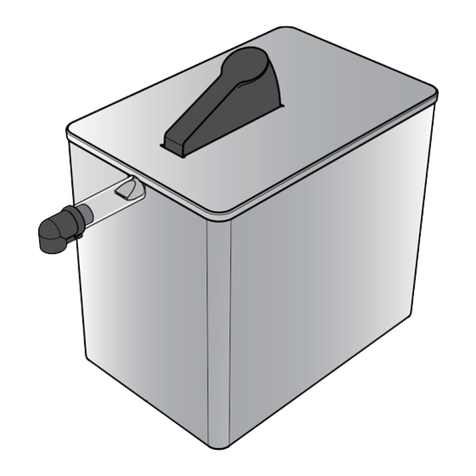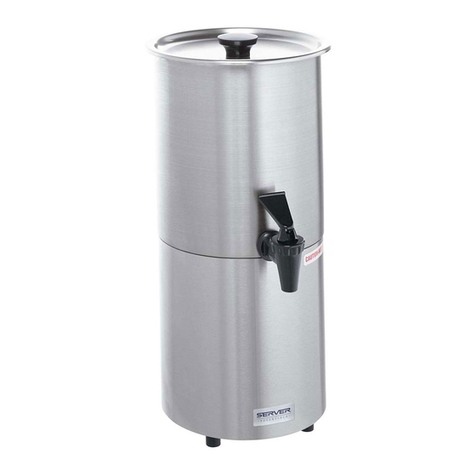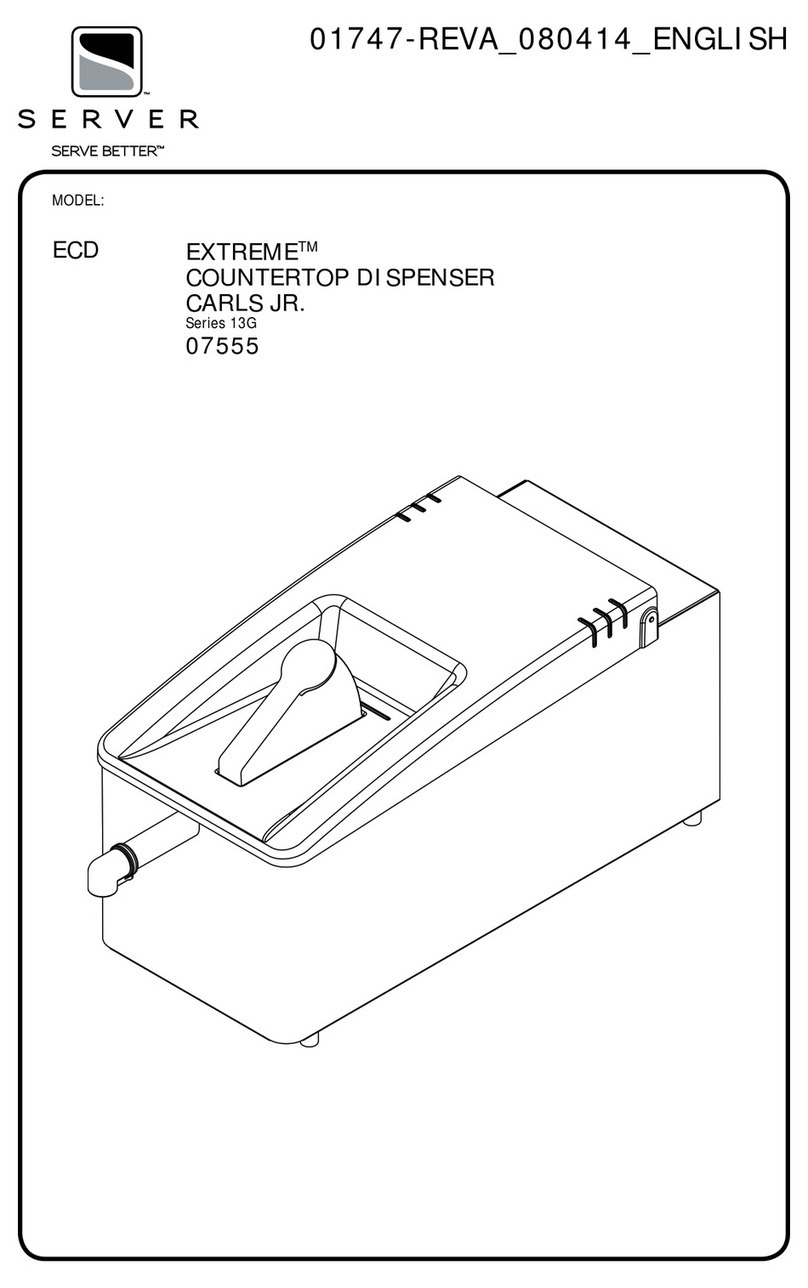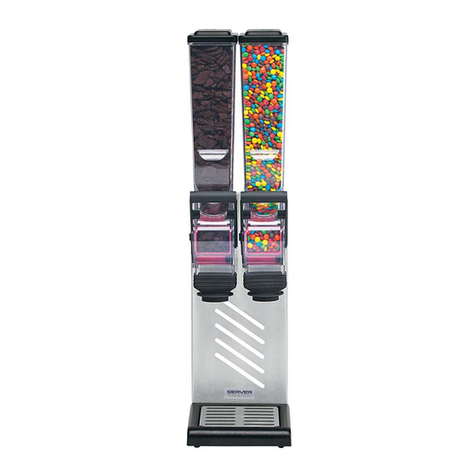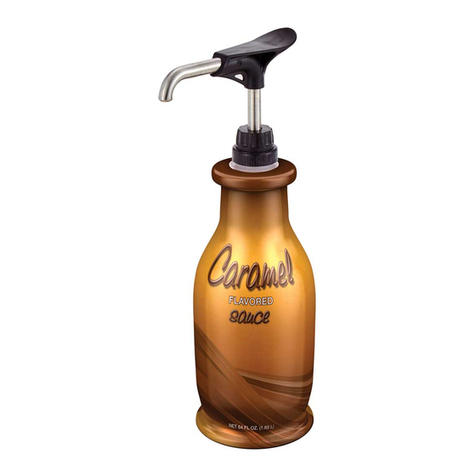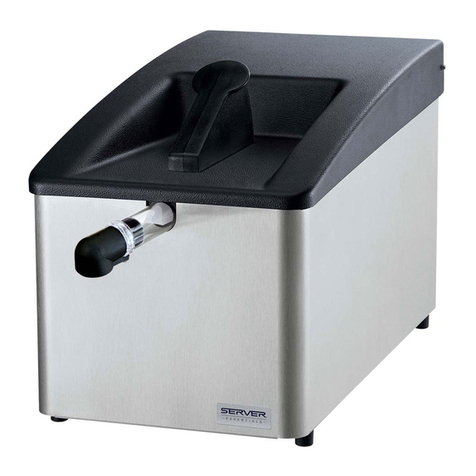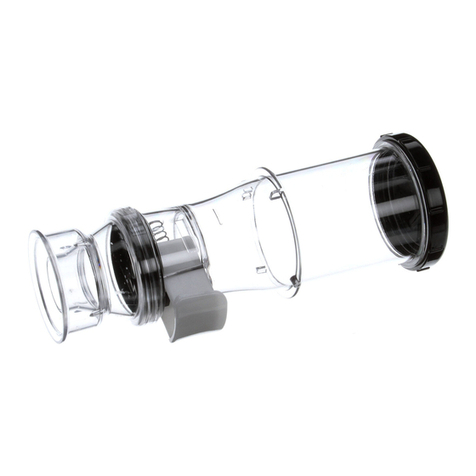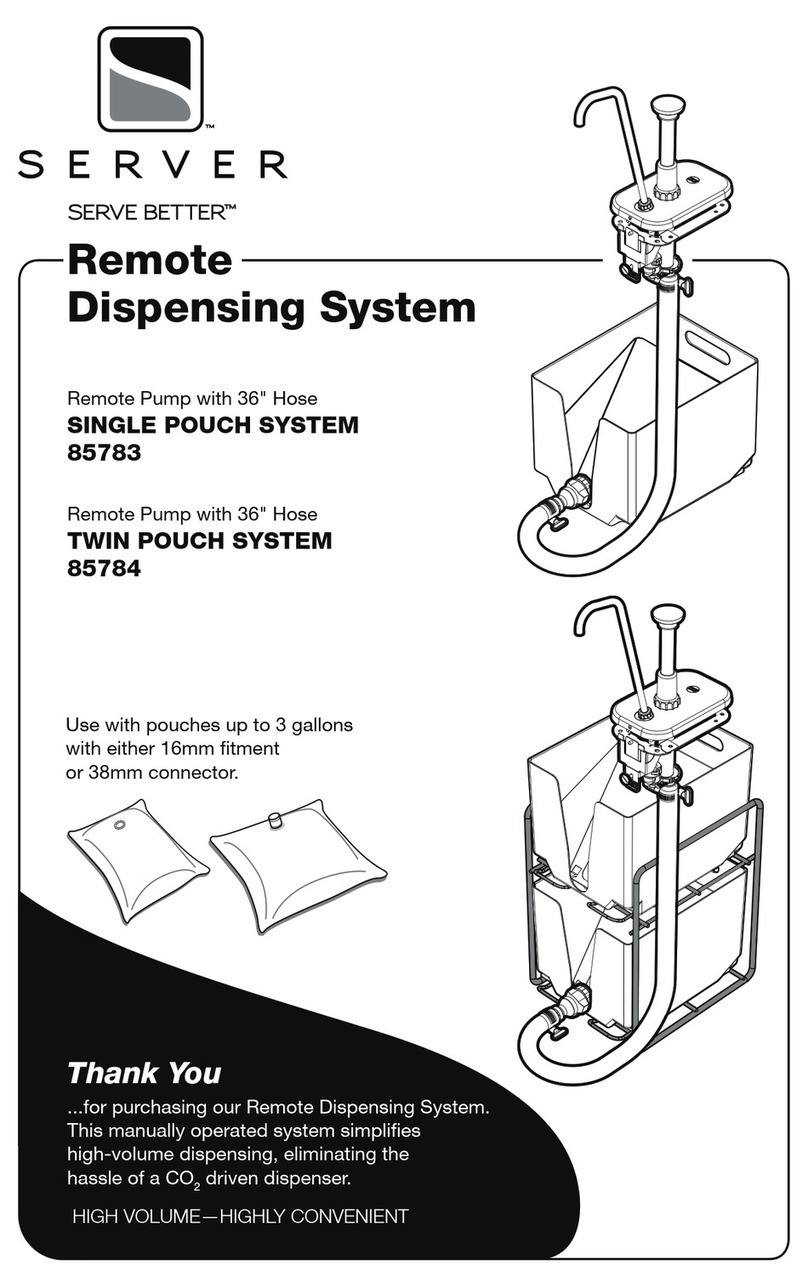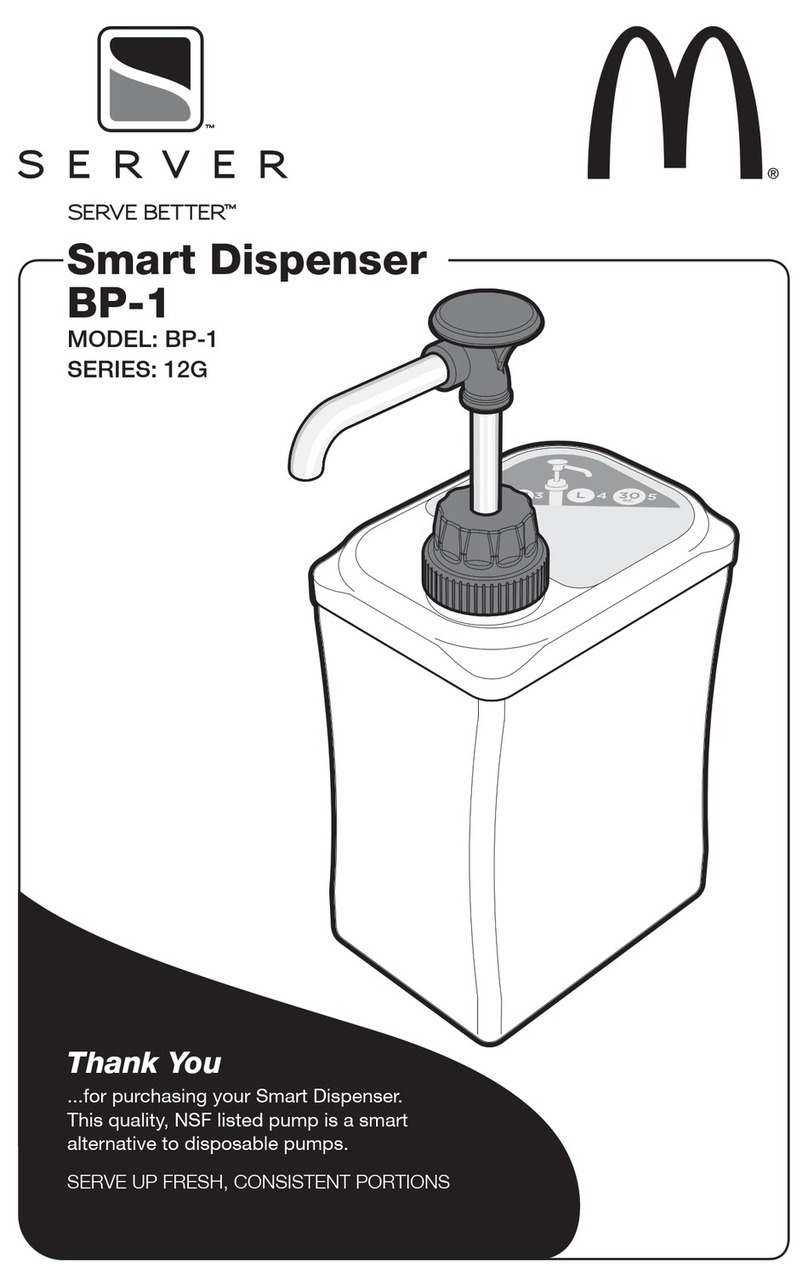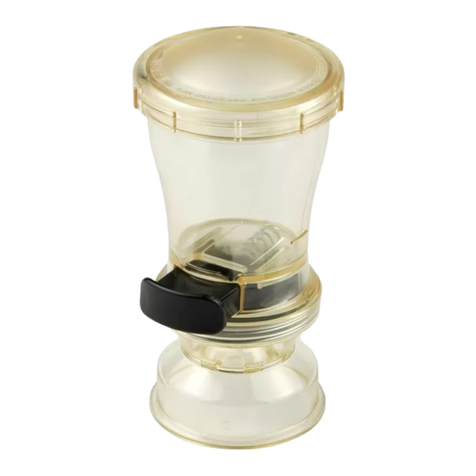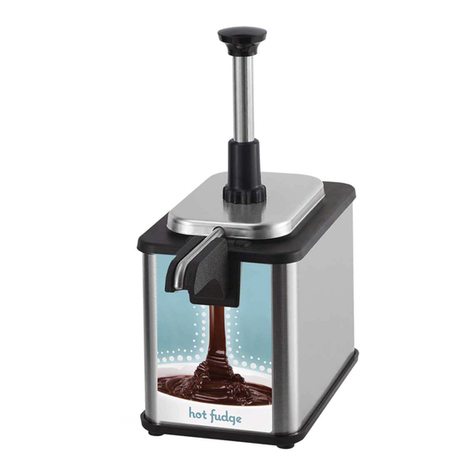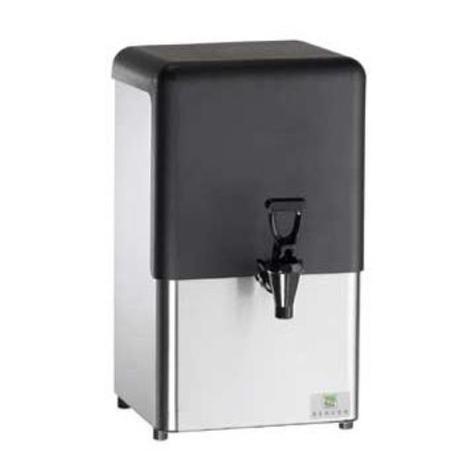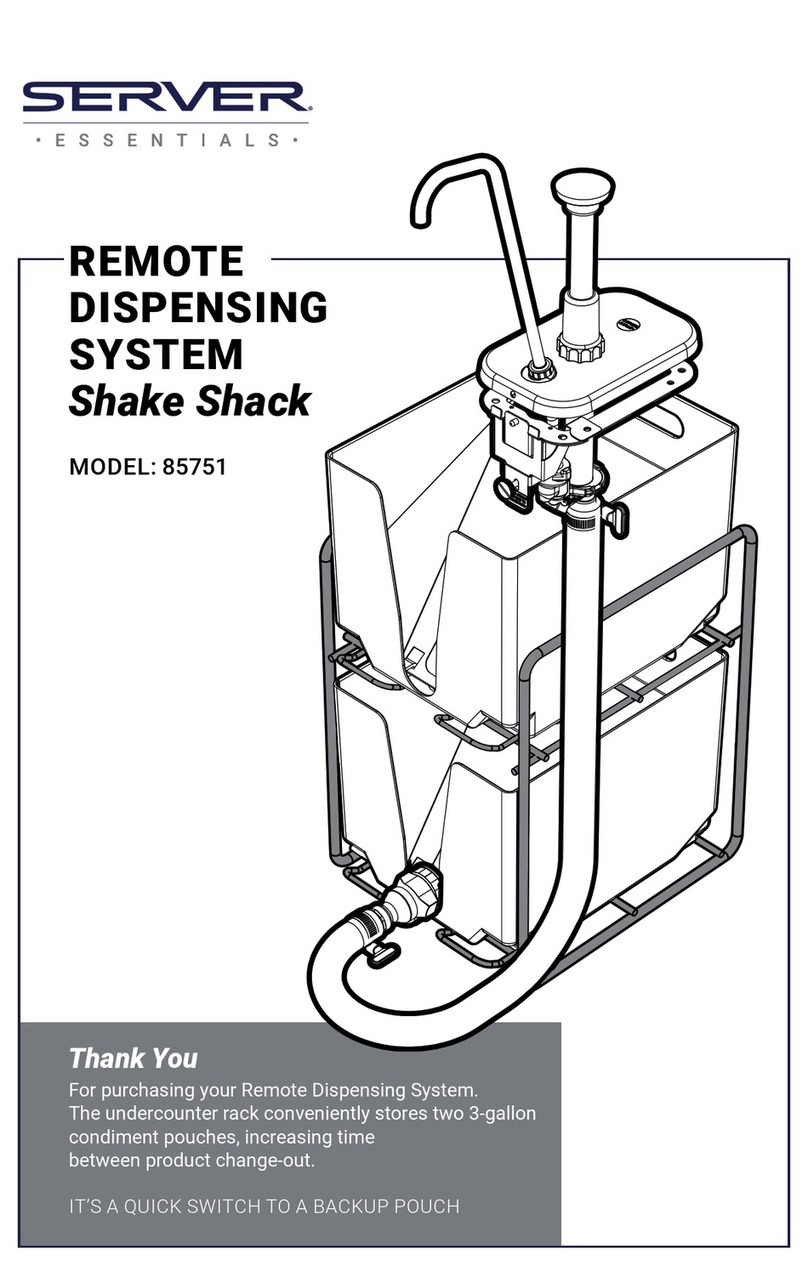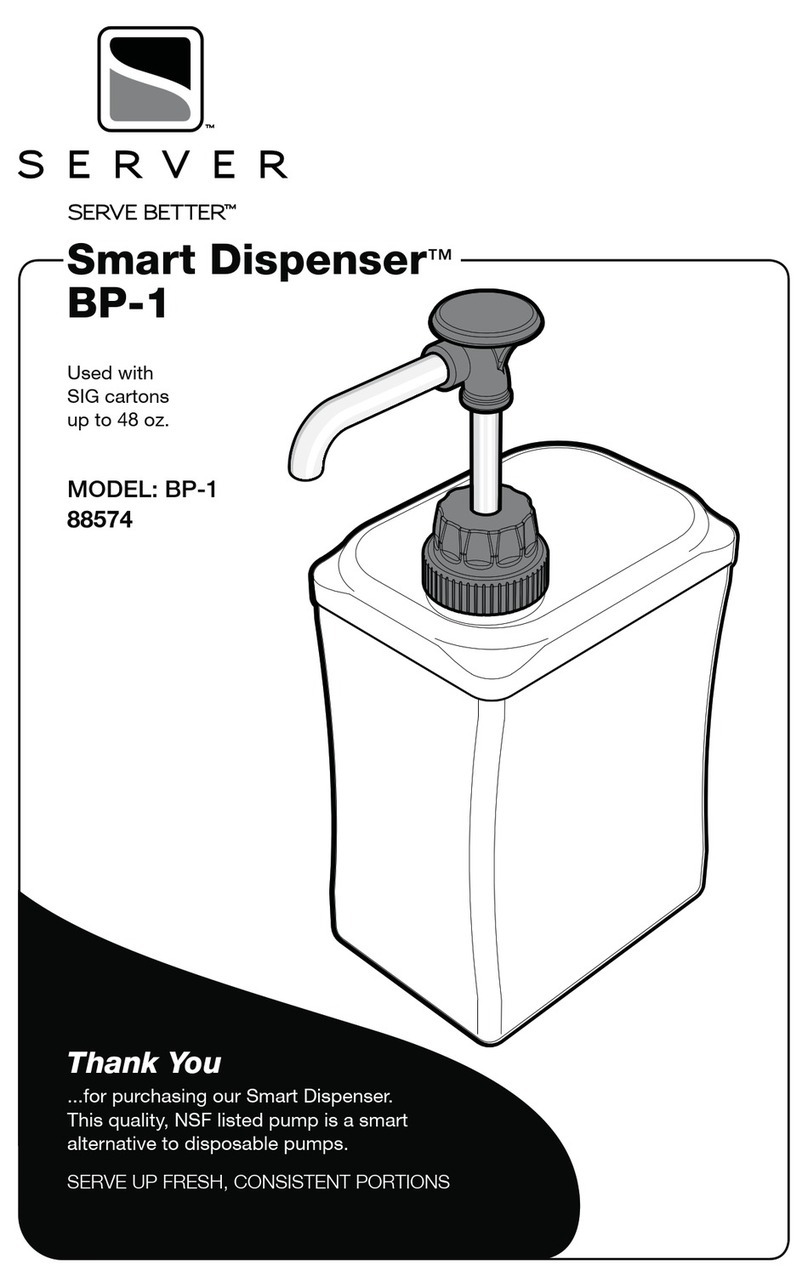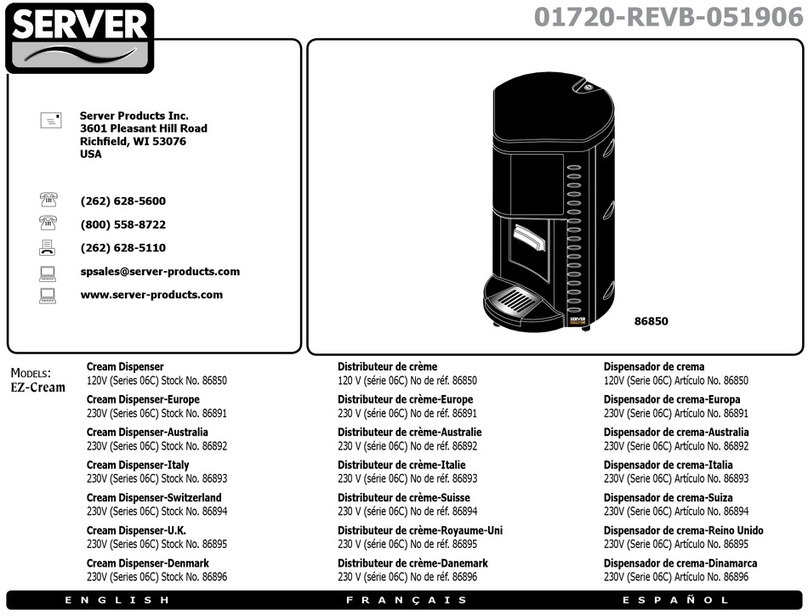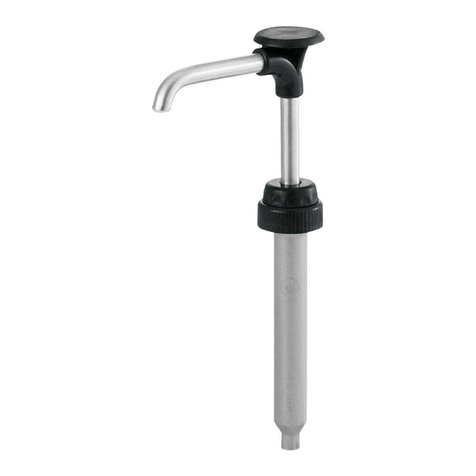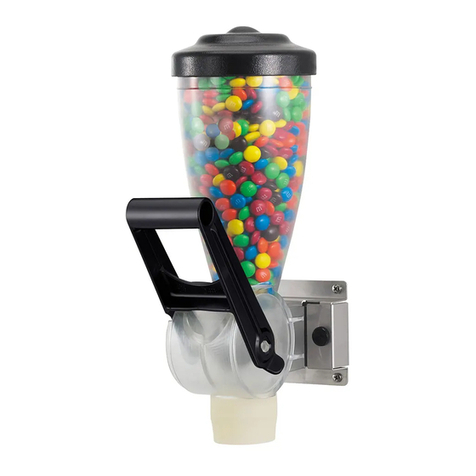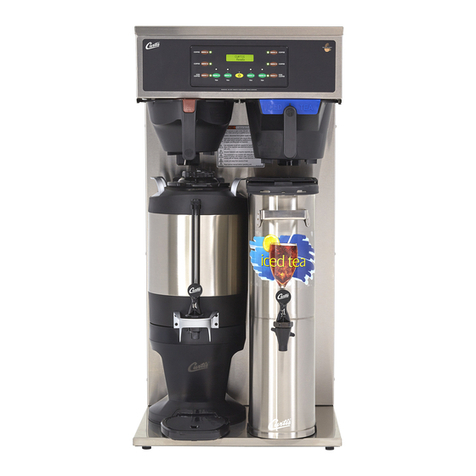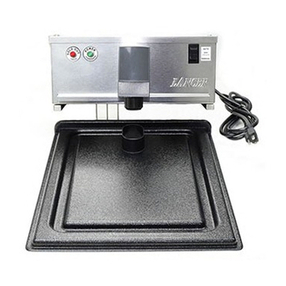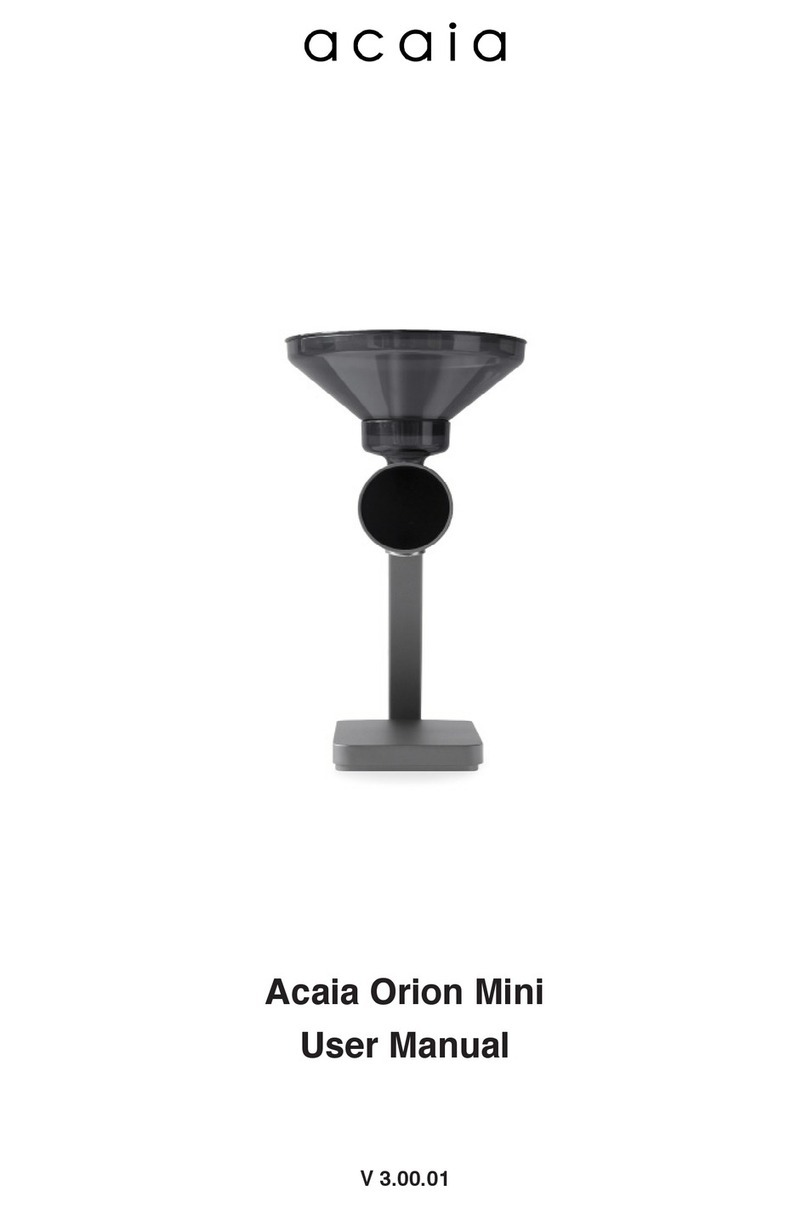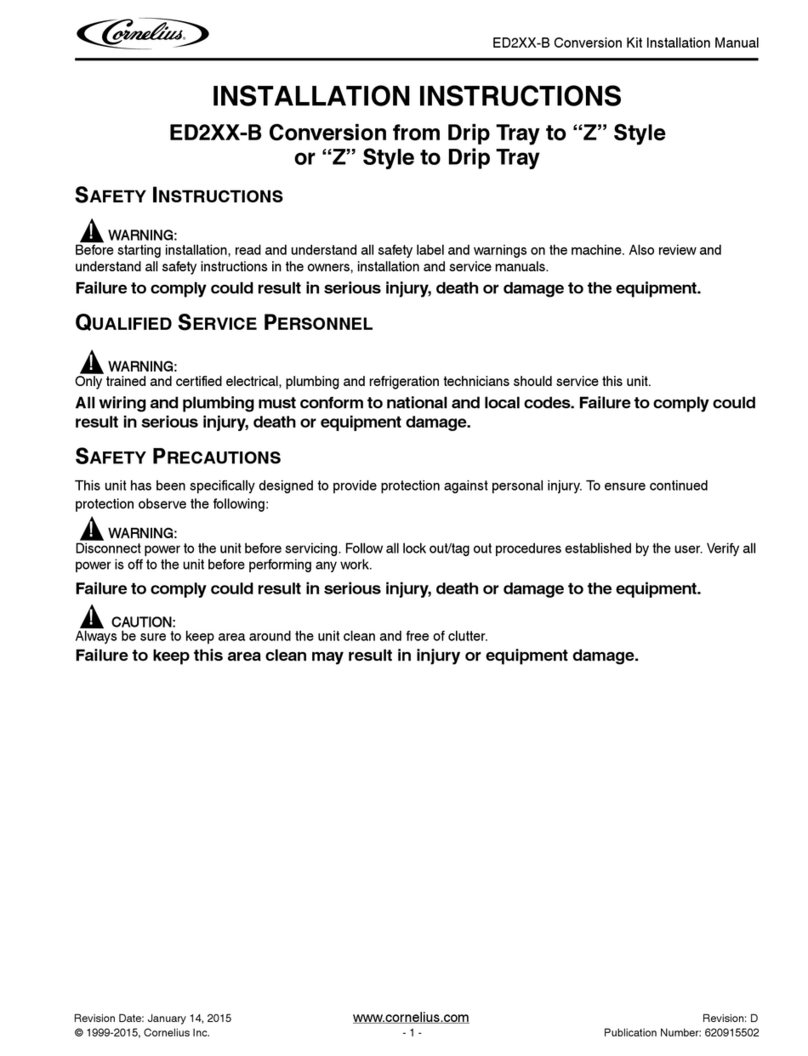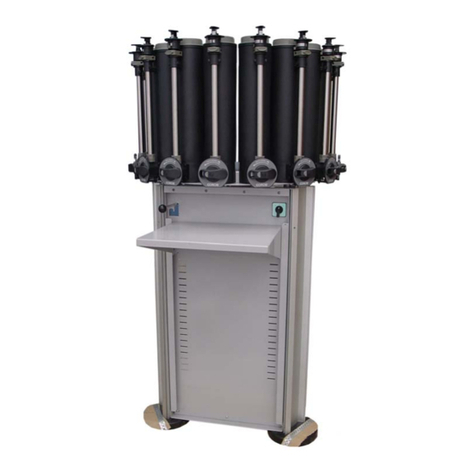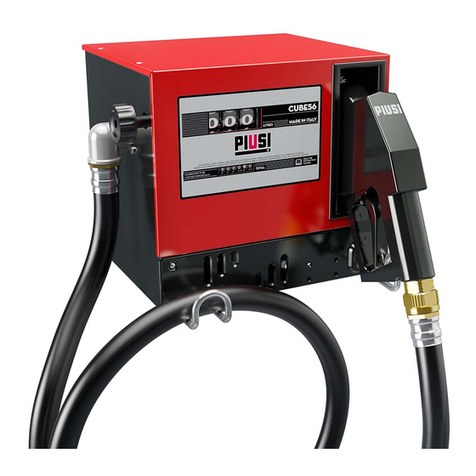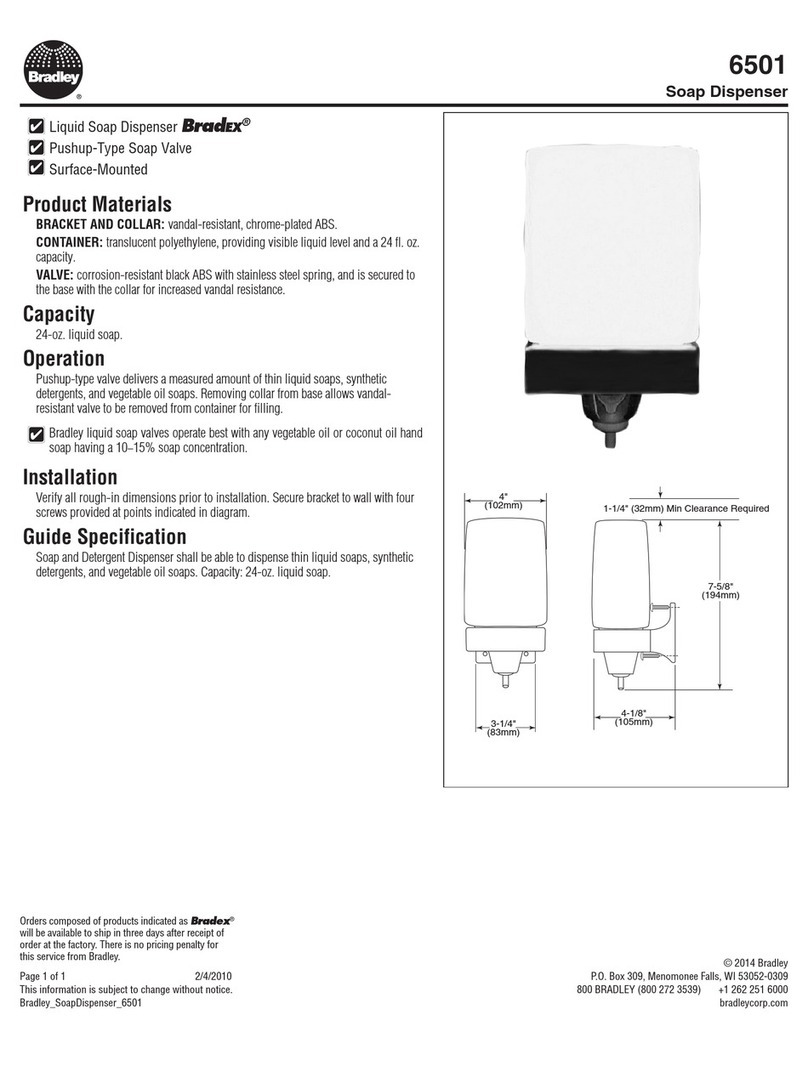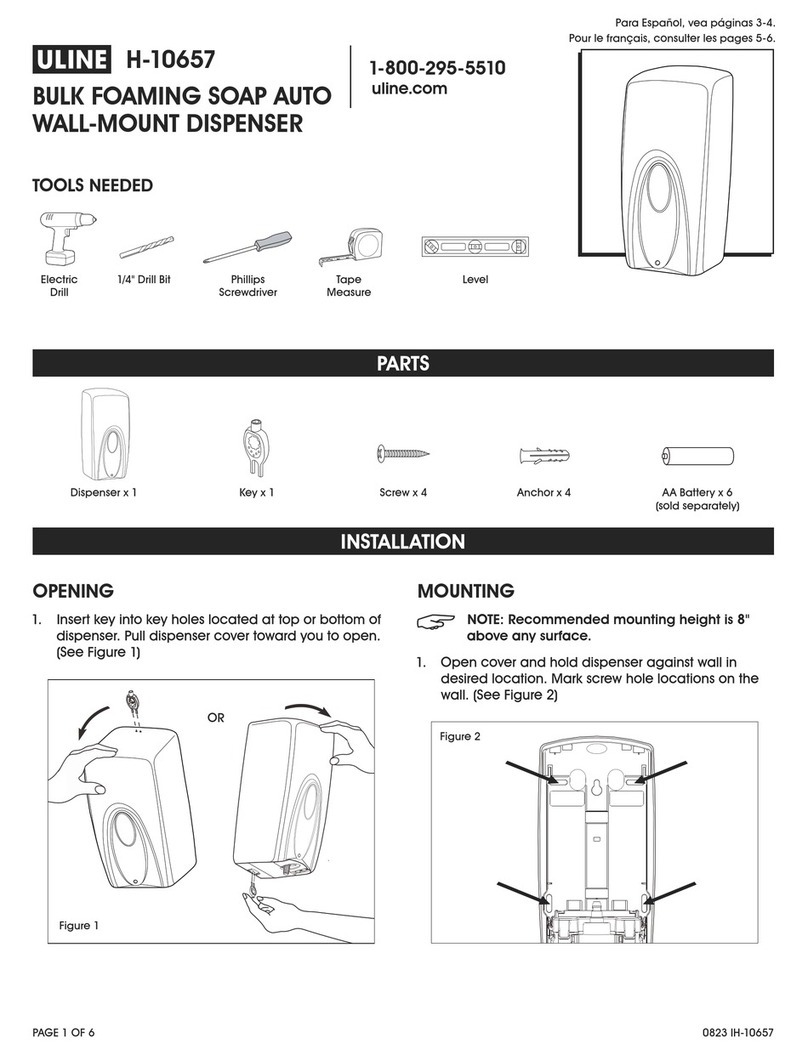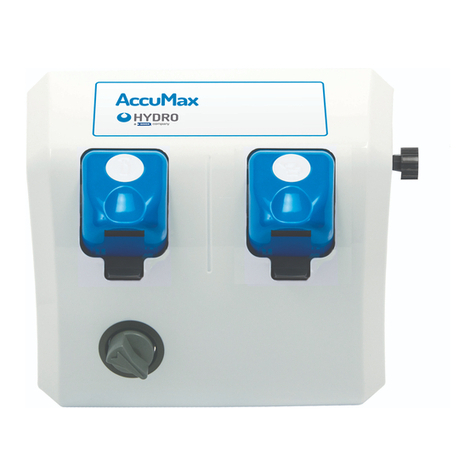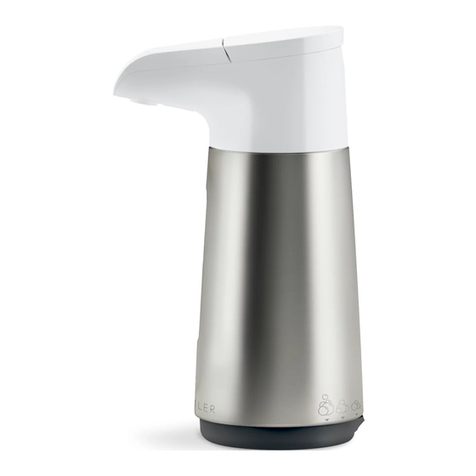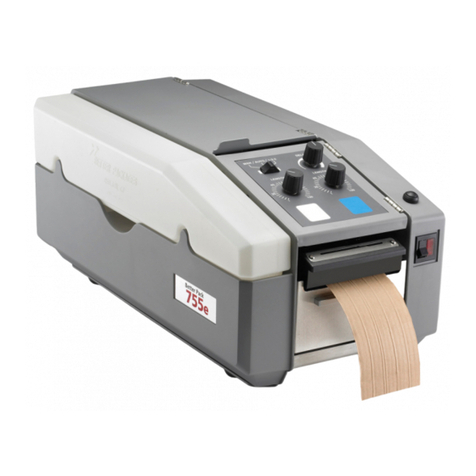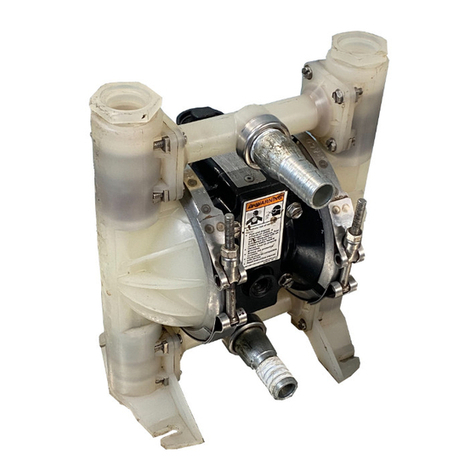
© 2021 Server Products, Inc.
TOUCHLESS EXPRESS™CLEANING INSTRUCTIONS
BWW_TE_DI_DP_100253_InstructionSheet
TAKE-DOWN & DISASSEMBLY
FLUSH & RINSE PUMP
4
REMOVE INTERNAL JAR WITH LID
3
Place lower end of pump into container of
hot water. Pump until all remaining product
is expelled and only water flows from
discharge tube.
DISASSEMBLE
5
POWER DOWN
1
Turn power switch to the "Off" position and
unplug unit from the power source.
REMOVE LID
2
Pull locking spring pin(s) out on the back
of the lid and pull lid up then slide the lid
forward to disengage lid slots from the
shroud tabs on front of the unit.
Sliding lid forward
to disengage lid
slots from shroud
tabs
Pulling locking
spring pin out to
unlock the back of
the lid
Pull out jar and lid. Internal food holding jar
and lid are dishwasher safe.
CLEANING
CLEAN
Remove lid and pull out pump. After
disassembling pump, clean all parts with
soap and hot water.
RINSE
fully with clear water.
1
SANITIZE
all parts according to local sanitization
requirements. All parts in contact with
food must be sanitized.
AIR DRY
all parts fully.
2
34
Use dishwashing soap and hot water
YES!
• External surfaces may be wiped clean with a clean damp cloth.
• Dry all parts fully with a clean soft cloth.
• Glass and surface cleaners approved for use in food contact areas may be used.
• Do not use abrasive, caustic or ammonia based cleansers.
• Do not use metal scrapers or cleaning pads that could scratch surfaces.
• Internal food holding jar and lid are dishwasher safe.
WARNING-
ELECTRICAL SHOCK COULD OCCUR
• Electrical components of unit could be
damaged from water exposure or any liquid.
• Never immerse lid into water or any liquid.
• Never use a water jet or pressure sprayer on lid.
• Ensure unit is “OFF” and unplugged.
Pump 100265
IMPORTANT!
Periodically clean sensor window with a microfiber cloth to keep
it free of debris in order to function properly.
This unit is constructed with
stainless steel— one of the best
materials for food serving and
storage.
If you notice corrosion beginning on
any stainless steel surface, you may need to
change the cleansing agent, sanitizing agent, or
the cleaning procedures you are using.
CARE OF STAINLESS STEEL
• A mildly abrasive nylon or brass brush may
be used to remove any stubborn food or
mineral deposits on interior surfaces of unit.
• Fully rinsing and drying all parts can help
prevent corrosion. Elements and minerals in
tap water can accumulate on stainless steel
parts and create corrosion.
• Do not use products containing acids,
alkalines, chlorine, or salt. These agents can
corrode stainless steel.
